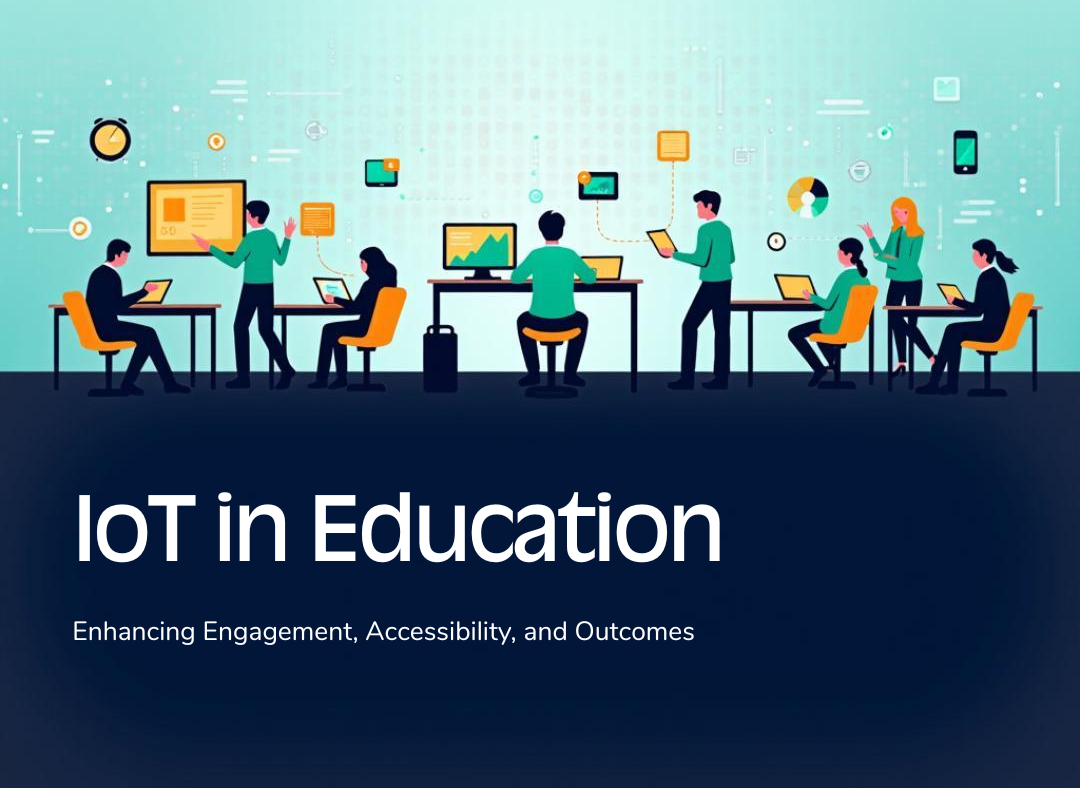Blog on RFID Technology and IoT Solutions
Blog Home
IoT in Education: Enhancing Engagement, Accessibility, and Outcomes
27 May 2025The rise of the Internet of Things (IoT) is driving a profound transformation across the educational landscape. By interconnecting devices, systems, and people, IoT is not only reshaping how educational content is delivered but also how students learn, engage, and succeed. From classrooms equipped with smart technologies to remote learning platforms tailored to individual needs, IoT is fueling a future where learning is more interactive, inclusive, and impactful.
1. Making Learning More Engaging
Traditional teaching methods are rapidly being replaced by interactive and immersive experiences. IoT devices like smartboards, student response systems, and connected tablets enable real-time collaboration between students and teachers. For example, smart projectors can stream live experiments from science labs, allowing remote students to participate. These dynamic interactions help break monotony, stimulate curiosity, and enhance comprehension through active learning.
2. Improving Accessibility for All Learners
IoT bridges the gap for students with disabilities or those in geographically remote regions. Wearable devices and connected assistive tools, such as speech-to-text converters, hearing aids integrated with lesson content, and personalized screen readers, allow every student to access education in a way that suits their needs. Additionally, cloud-based platforms synced with IoT devices provide round-the-clock access to lectures, notes, and assignments, ensuring education is no longer confined by time or place.
3. Real-Time Performance Analytics
One of the most powerful aspects of IoT in education is the ability to gather and analyze data in real time. Teachers can monitor students’ progress continuously using data collected from devices—such as attendance trackers, learning app usage, or quiz results—to identify learning patterns and detect when a student is struggling. This allows for immediate intervention and personalized support that enhances learning outcomes.
4. Smart Campus Infrastructure
Beyond the classroom, IoT enhances the operational efficiency of educational institutions. Smart lighting and HVAC systems reduce energy consumption, while IoT-enabled security solutions, like facial recognition entry or real-time CCTV monitoring, improve campus safety. Smart scheduling systems also optimize room usage and minimize administrative burdens.
5. Facilitating Remote and Hybrid Learning
IoT has become indispensable in supporting hybrid and distance learning models. Devices like interactive whiteboards, smart webcams, and IoT-enabled learning management systems help maintain a seamless connection between on-site and remote students. These tools ensure that learners receive consistent quality education, regardless of location.
6. Enabling Adaptive Learning Environments
With the data collected from IoT devices, educational software can adjust content based on a student’s progress and preferences. This adaptive learning approach helps cater to different learning speeds and styles, making education more personalized and effective.
Final Thoughts
IoT in education is more than just a trend—it’s a transformative force driving greater engagement, accessibility, and improved learning outcomes. As technology continues to evolve, its potential to democratize education and prepare students for a connected world becomes ever more significant. Educational institutions that embrace IoT will not only improve student performance but also redefine the very nature of teaching and learning for generations to come.
- Intellistride.com
- Blog
- IoT in Education: Enhancing Engagement, Accessibility, and Outcomes